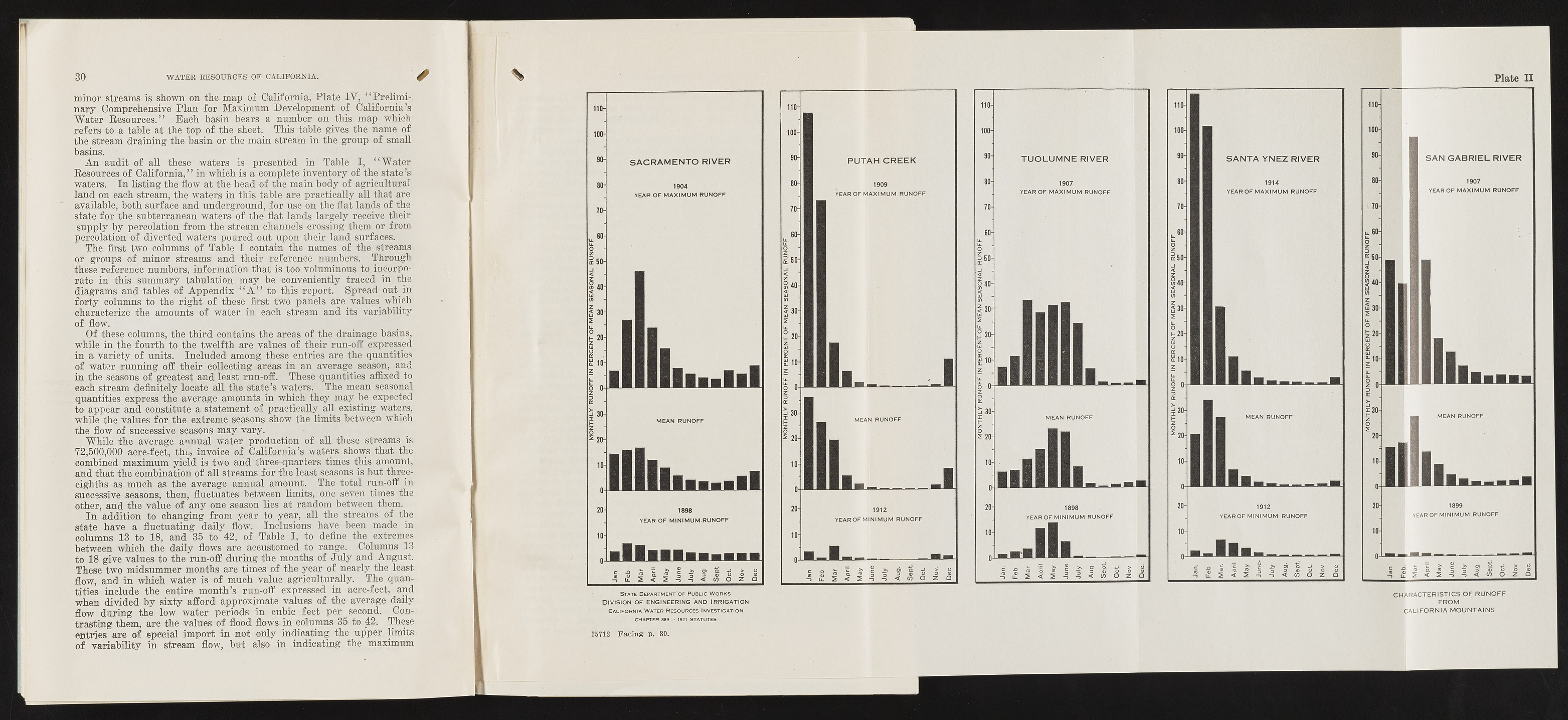Copyright & Fair-use Agreement
UNLV Special Collections provides copies of materials to facilitate private study, scholarship, or research. Material not in the public domain may be used according to fair use of copyrighted materials as defined by copyright law. Please cite us.
Please note that UNLV may not own the copyright to these materials and cannot provide permission to publish or distribute materials when UNLV is not the copyright holder. The user is solely responsible for determining the copyright status of materials and obtaining permission to use material from the copyright holder and for determining whether any permissions relating to any other rights are necessary for the intended use, and for obtaining all required permissions beyond that allowed by fair use.
Read more about our reproduction and use policy.
I agree.Information
Digital ID
Permalink
Details
Member of
More Info
Rights
Digital Provenance
Publisher
Transcription
30 WATER RESOURCES OF CALIFORNIA. minor streams is shown on the map of California, Plate IV, “ Preliminary Comprehensive Plan for Maximum Development of California’s Water Resources.” Each basin bears a number on this map which refers to a table at the top of the sheet. This table gives the name of the stream draining the basin or the main stream in the group of small basins. A n audit of all these waters is presented in Table I, “ Water Resources of California,” in which is a complete inventory of the state’s waters. In listing the flow at the head of the main body of agricultural land on each stream, the waters in this table are practically all that are available, both surface and underground, for use on the flat lands of the state for the subterranean waters of the flat lands largely receive their supply by percolation from the stream channels crossing them or from percolation of diverted waters poured out upon their land surfaces. The first two columns of Table I contain the names of the streams or groups of minor streams and their reference numbers. Through these reference numbers, information that is too voluminous to incorporate in this summary tabulation may be conveniently traced in the diagrams and tables of Appendix “ A ” to this report. Spread out in forty columns to the right of these first two panels are values which characterize the amounts of water in each stream and its variability of flow. Of these columns, the third contains the areas of the drainage basins, while in the fourth to the twelfth are values of their run-off expressed in a variety of units. Included among these entries are the quantities of water running off their collecting areas in an average season, and in the seasons of greatest and least run-off. These quantities affixed to each stream definitely locate all the state’s waters. The mean seasonal quantities express the average amounts in which they may be expected to appear and constitute a statement of practically all existing waters, while the values for the extreme seasons show the limits between which the flow of successive seasons may vary. While the average annual water production of all these streams is 72,500,000 acre-feet, this invoice of California’s waters shows that the combined maximum yield is two and three-quarters times this amount,; and that the combination of all streams for the least seasons is but three-eighths as. much as the average annual amount. The total run-off in successive seasons, then, fluctuates between limits, one seven times the other, and the value of any one season lies at random between them. In addition to changing from year to year, all the streams of the state have a fluctuating daily flow. Inclusions have been made in columns 13 to 18, and 35 to 42, of Table I, to define the extremes between which the daily flows are accustomed to range. Columns 13 to 18 give values to the run-off during the months of July and August. These two midsummer months are times of the year of nearly the least flow, and in which water is of much value agriculturally. The quantities include the entire month’s run-off expressed in acre-feet, and when divided by sixty afford approximate values of the average daily flow during the low water periods in cubic feet per second. Contrasting them, are the values of flood flows in columns 35 to 42. These entries are of special import in not only indicating the upper limits of variability in stream flow, but also in indicating the maximum 110- 100- 90- 70- 60 20- S A C R A M E N T O RIVER 1904 YEA R O F M AXIM UM RUN O FF MEAN RUN OFF " l l k l l U M l l 1898 YEAR O F MINI MUM RUN O FF 2 < 2 < U) o z o Sta te Departm ent o f Public Wor ks D IVISIO N O F EN G IN EERIN G AND IRRIG ATIO N Califo rnia Water Resources In vestig atio n CHAPTER 889 -• 1921 STATUTES 25712 Facing p. 30. Plate II 110- 100- 90- 80- 7 0- [L. 60- It.0 ? 1 60- J< I I 4 0- <111 in < 30- 20- 10- b o- P U T A H C R E E K 1909 YEAR OF M AXIM UM RUN O FF 9 1 £ ? MEAN RUN O FF III. 20- 1912 Y EA R O F MINIMUM RUN O FF 2 < 2 < w O Z Q C H A R A C T E R IS T IC S O F R U N O F F F R O M H t A L I F O R N I A M O U N T A IN S

